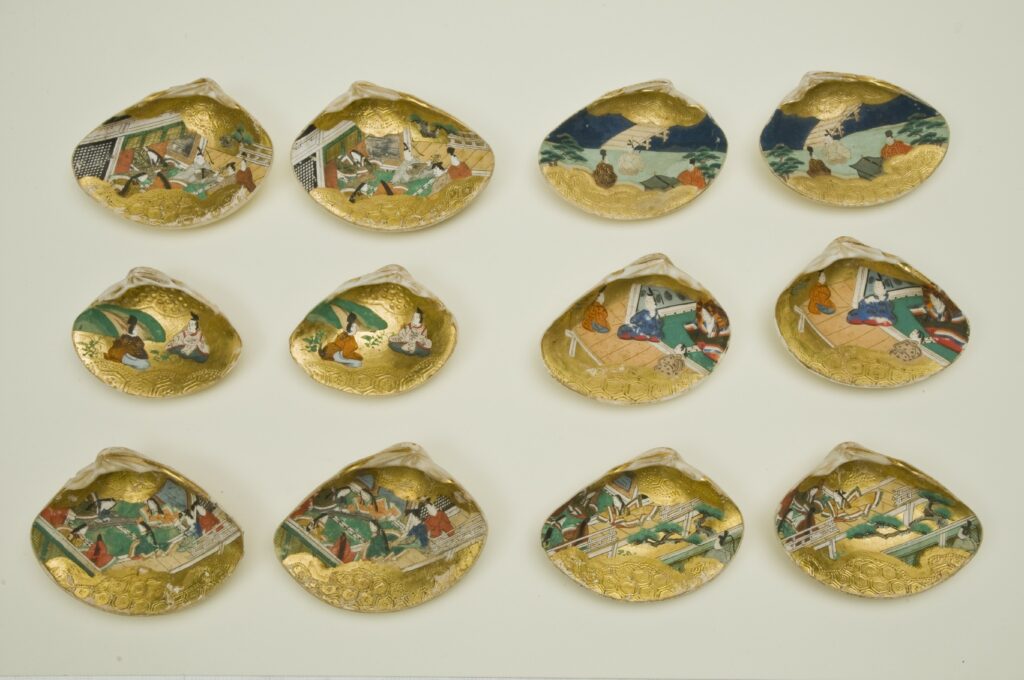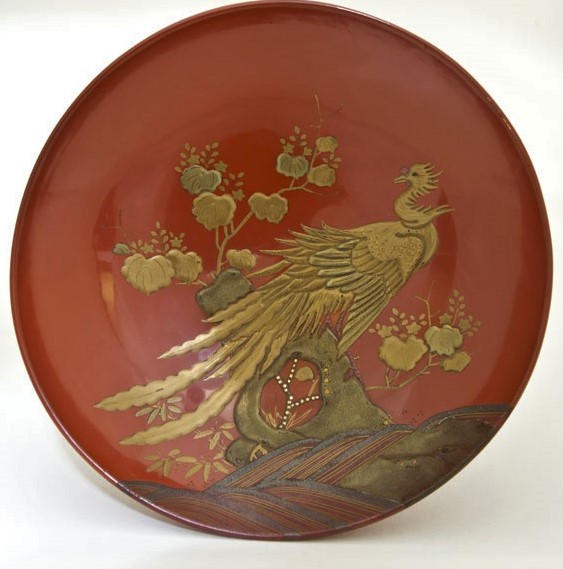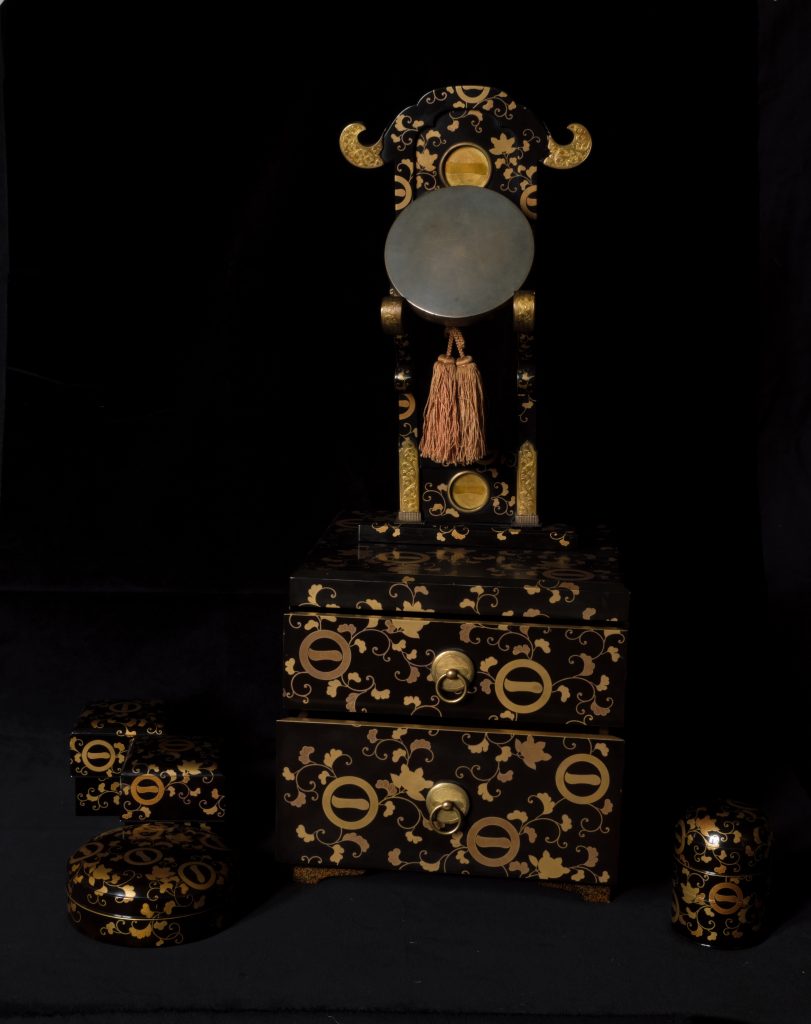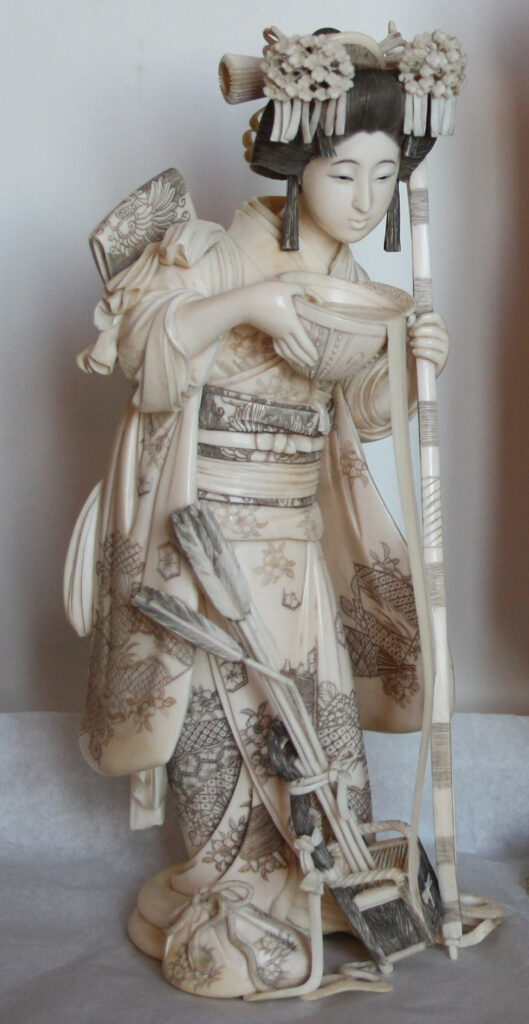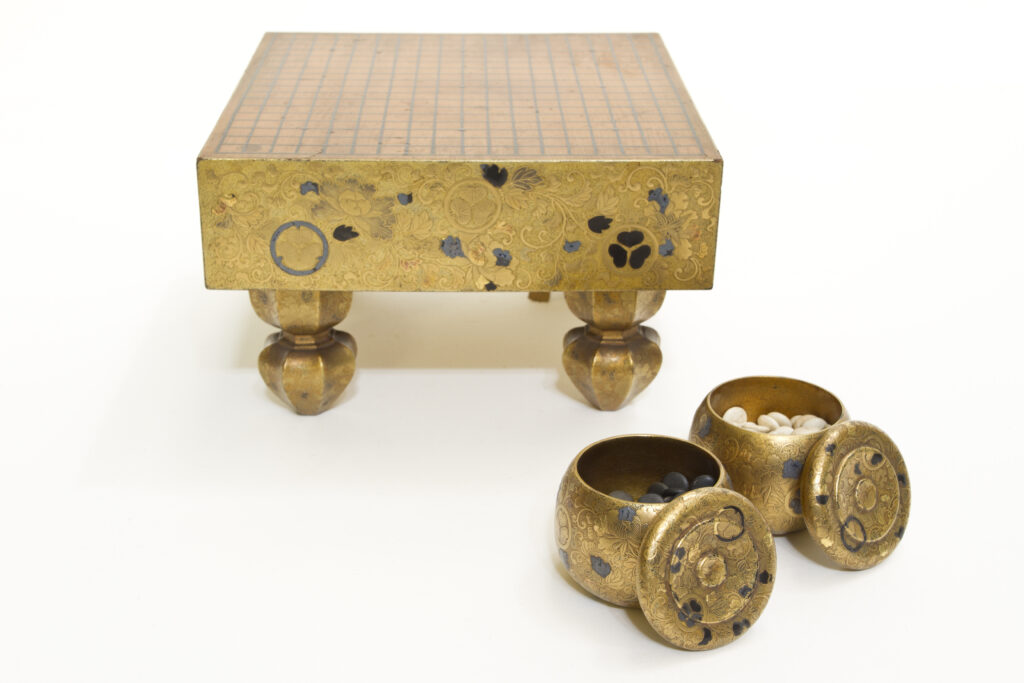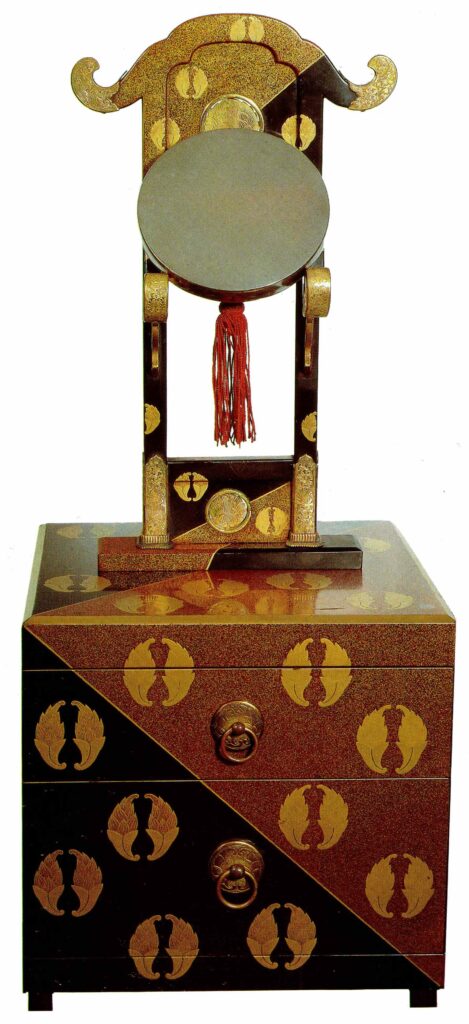ROOM 9
The room 9 is focused on wedding lacquered dowry of noblewomen. In the center of the room, there are sakazuki, small ceremonial cups for sake, with a red lacquered surface decorated with gold. There is also everything needed for female beauty: combs and hairpins, basins for personal hygiene and teeth blackening, cabinets for making up (kyōdai). These pieces show the high technical level achieved by Japanese lacquer masters.
Then there are some refined board games: some boards for the Japanese go and surogoku game, some big octagonal lacquered boxes (kaioke) with refined painted shells valves used in the kai awase game (a sort of memory game). In the room there is also a precious Chinese chess board with its painted ivory carved pieces and the stem of Bourbon family. On the walls, in addition to kakejiku (painted scrolls), two marvelous fusuma (traditional Japanese sliding doors) signed by Genki painted with autumnal and winter scenes are hung up. In the showcase 11, some ivory okimono (small decorative sculptures) minutely represent small animals, young ladies and samurai.
In the showcases 12, 13, 14, there are some netsuke, clips made of ivory, lacquer, metal, porcelain, or wood with countless shapes and carefully detailed. They served to fix small herb cases (inrō), tobacco pouches and pipe cases or money pockets.

